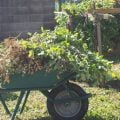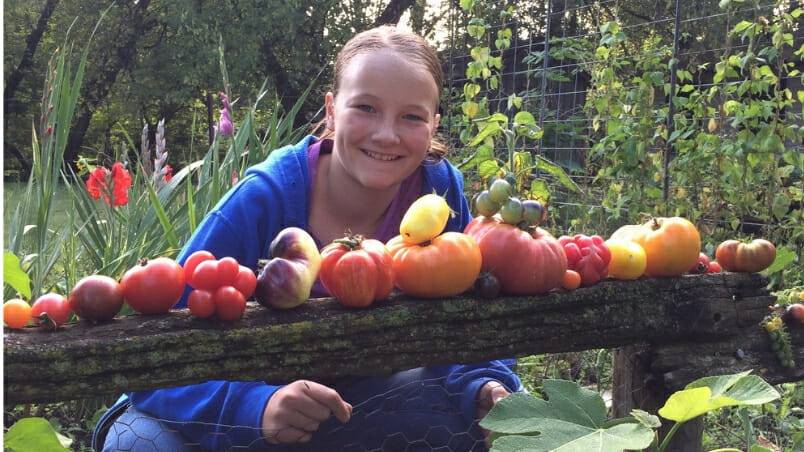While much of Canada is still in the grips of a deep freeze, in the Kansai region of Japan, February is the first potato-planting season of the year. The fact that I am not only beginning a new planting season, but am still harvesting a wealth of vegetables from last fall’s planting, is a constant source of wonder to me. Even the tedious task of breaking up clods of soil gives me joy, especially when I work up enough of a sweat to strip down to a t-shirt, while gazing at the snow-capped mountains that surround me; any homesickness I feel for my wonderfully multicultural homeland, quickly melts away, like the light snows in this basin.
You may not associate potatoes with Japan, but according to Stats Can, the nation better known for rice consumption, imports about $30 million worth of powdered and frozen potatoes from Canada annually, making it the third largest importer of our freeze dried spuds. Japan’s largest prefecture, Hokkaido – about equal in size and latitude to New Brunswick – grows 80 percent of the fresh potatoes for the Japanese market. At ¥300 – roughly $3.50 CDN) – for a bag of three small potatoes, it is the most cost effective crop I grow.
It’s likely Japan tasted potatoes before Canada did. The infamous English samurai – and possible-though-a-real-long-shot-ancestor – William Adams, opened up and maintained trade between the Dutch and Japanese from the years of 1600 to 1625. The Dutch, who had potatoes before the English, are responsible for spreading the tuber throughout East Asia, and it’s unlikely they skipped Japan. Furthermore, Adams served under Francis Drake, the man responsible for bringing the potato back to England from Columbia in 1561. On the other hand, Canada’s first recorded planting of the potato, dates to the late 1700s in PEI.
Yet the Japanese did not incorporate the potato into their diet until after World War Two. They considered it pigs’ food. In this way, they were no different from the Europeans who had to be driven by starvation, war, tax incentives, and coercion by leaders like Prussia’s Frederick the Great to take to eating them. Japan’s introduction to the spud happened just as the Edo period ushered in 250 years of peace and prosperity within its borders and hence, the people never needed to eat them.
Despite the Americans promoting the potato to the Meiji Emperor, it was so unknown to the people of Japan, that when, in April 1943, the destroyer the USS O’Bannon suddenly came upon the Japanese submarine R-0-34, which was up for air, potatoes saved the Americans’ lives. The US ship being too close to fire its big guns, was an easy target for the Japanese submarine. However, the American crew who were on deck peeling potatoes and without guns, quit peeling and started throwing them at the Japanese sailors. Thinking they were a new kind of hand grenade, the Japanese immediately started throwing them back, as they retreated down the hatch. In their panic they never manned their guns and the submarine began its descent. This gave the Americans the necessary time and distance to open up their guns and sink the sub.
Despite its checkered wartime past, potatoes have slowly gained in popularity here, largely as snack foods, such as Jagaimo, a deep-fried, powdered potato stick. Rice, however remains the dominant starch at mealtime. The most famous dishes are Jaegabata (baked potato with butter), Niku Jaega, (a simple dish of boiled meat, potatoes, lotus root and carrot), which every shameless western punster cannot help pronouncing as Mick Jagger. And the more delicate pari pari salad, in which the potatoes are grated into extremely thin strips like the finest vermicelli and deep fried, then heaped up on a bed of lettuce.
The method of planting potatoes in Japan is the same for all vegetables: on top of mounds rather than on flat ground, thus ensuring good drainage. Once the mound is formed a trench is dug, and the seed potato is placed in a hole in the trench. In February, the seed potato is cut in half, giving you more seeds as you can use eyes on both sides of the potato. In the hot soil of September, however, the halved potato would dry out and rot quickly, so the full potato is planted as a seed to preserve its own moisture. Potash is then put in the 30 cm spaces between each spud. A little earth is raked lightly over the potatoes and potash, enough to just barely cover the seed potatoes.
Rice straw is then laid in the trench over the potatoes and potash. The rice straw provides space for the potatoes to grow in, space for moisture to easily reach the seeds, and nutrients as it rots into the ground. The earth on either side of the trench is then drawn to the center of the row, over the straw, mostly to hold the straw in place, rather than to totally cover the potatoes. Thus, the straw also prevents the soil form compacting too hard under the copious rains of this island nation.
This method is entirely translatable to Canada by simply replacing the rice straw with wheat or barley straw. Potash or potassium is a natural fertilizer, and Canada must have the largest reserves of it in the world, having formed when the Devonian Sea that once covered central Canada and the northern U.S. began drying up 350 million years ago leaving behind vast amounts of concentrated salts and minerals. Potassium is also very important for human health. Native Canadians made their own potash by boiling wood ash, the term potash is actually derived from this method. Native American potash was usually more potent as they included animal and fish bones and shells of bird eggs into the fires used for making potash.
The potash should be well separated from the potatoes, so that the roots benefit from it as it is leeched into the soil, without coming into contact with the tubers. I am not certain, but I think that too much potash, or potash coming in contact with the growing potato, may result in bad tasting potatoes, as I once added extra potash mid growing season after weeding, and the potatoes had a horrible metallic taste.
Why not give the Japanese potato-growing method a go where you garden?
The spring planting seed potato should be cut in half. The cut side placed downwards. www.almanac.com recommends cutting them one to two days ahead of planting so a protective “scab” forms and the potatoes do not dry out or rot as easily. I have never had any trouble however, cutting on the spot. Though I do recall one farmer suggesting dipping them in ash to prevent rotting. Very small seed potatoes should be left whole.

A red seed potato with eye, ready for winter planting. The seed potatoes planted in the fall are left whole to stop them drying out. The fall season is usually much drier in Japan. This also keeps them from rotting as quickly in the warm September soil. Potatoes planted in February and March are preserved by the cold soil and the spring rains keep them from drying out so they are cut. [[Keith Adams]]

A trench dug in the mound.

Seed potatoes are planted in holes in the center of a ridge or mound; a scoop of potash added in between each.
Rice straw is laid in the trench and then covered with soil. The rice straw keeps soil from compacting allowing water in, and potatoes space to grow. It also leeches nutrients and acts as an insulator in the cold months.

A Japanese wagtail inspects the finished potato mound for worms.

My niece, Ariella, on a visit, helping with the late June harvest of potatoes planted in February.
Keith is an environmentalist, university lecturer, musician, author, and organic farmer. His Master’s thesis on Roman Agriculture in North Africa, is from Concordia University, where he taught Roman history and Greek mythology, as well as writing and study skills. For over two decades, Keith has lived in Japan where he teaches academic writing, debate and social studies at three universities; plays three times a month with his band, Roman Rhodes and the Born Again Pagans; and of course, gardens. He is currently working on a book about farming in Japan, focusing on its traditional methods’ benefits to the environment and the absolute necessity of the small farm to our survival.


















